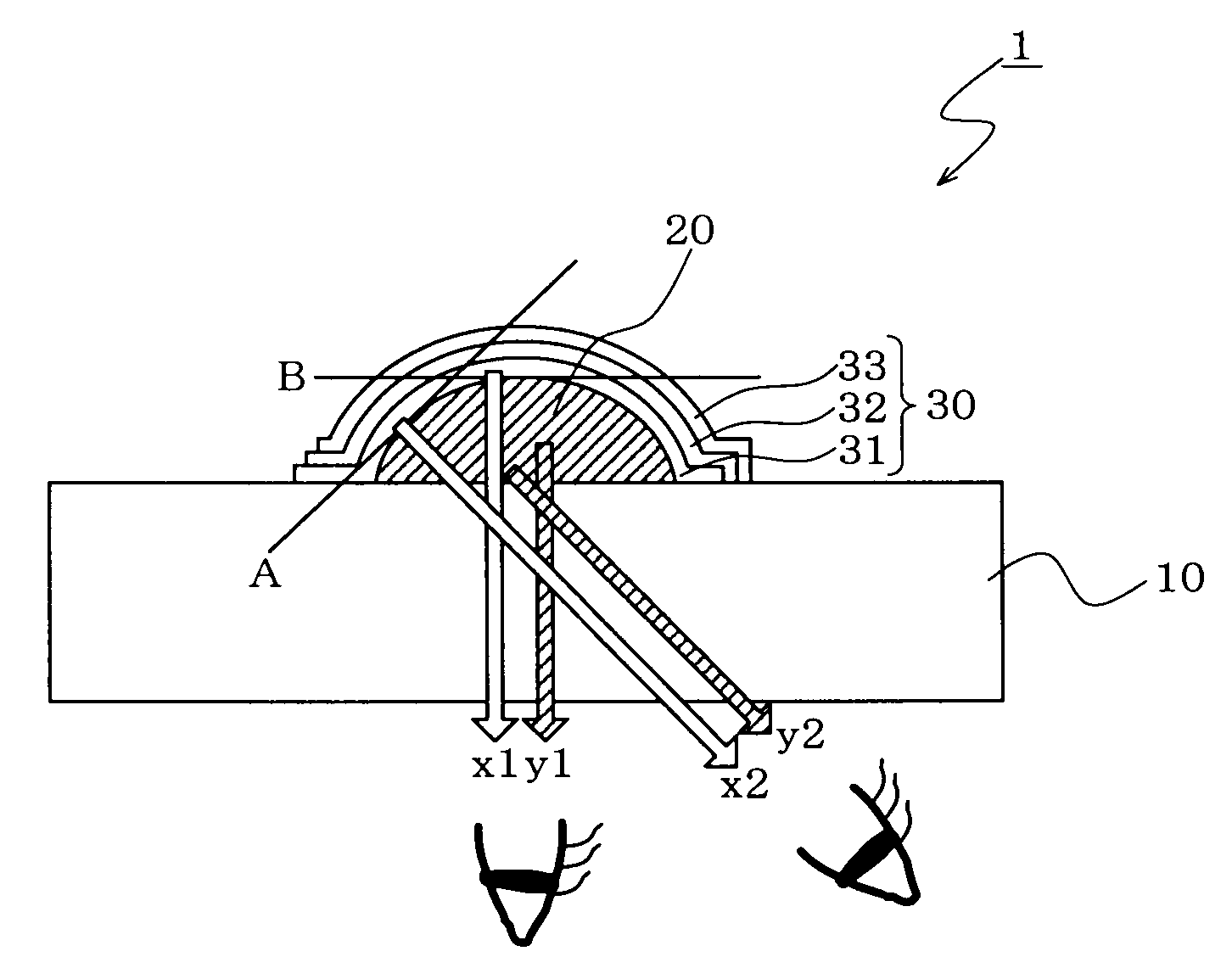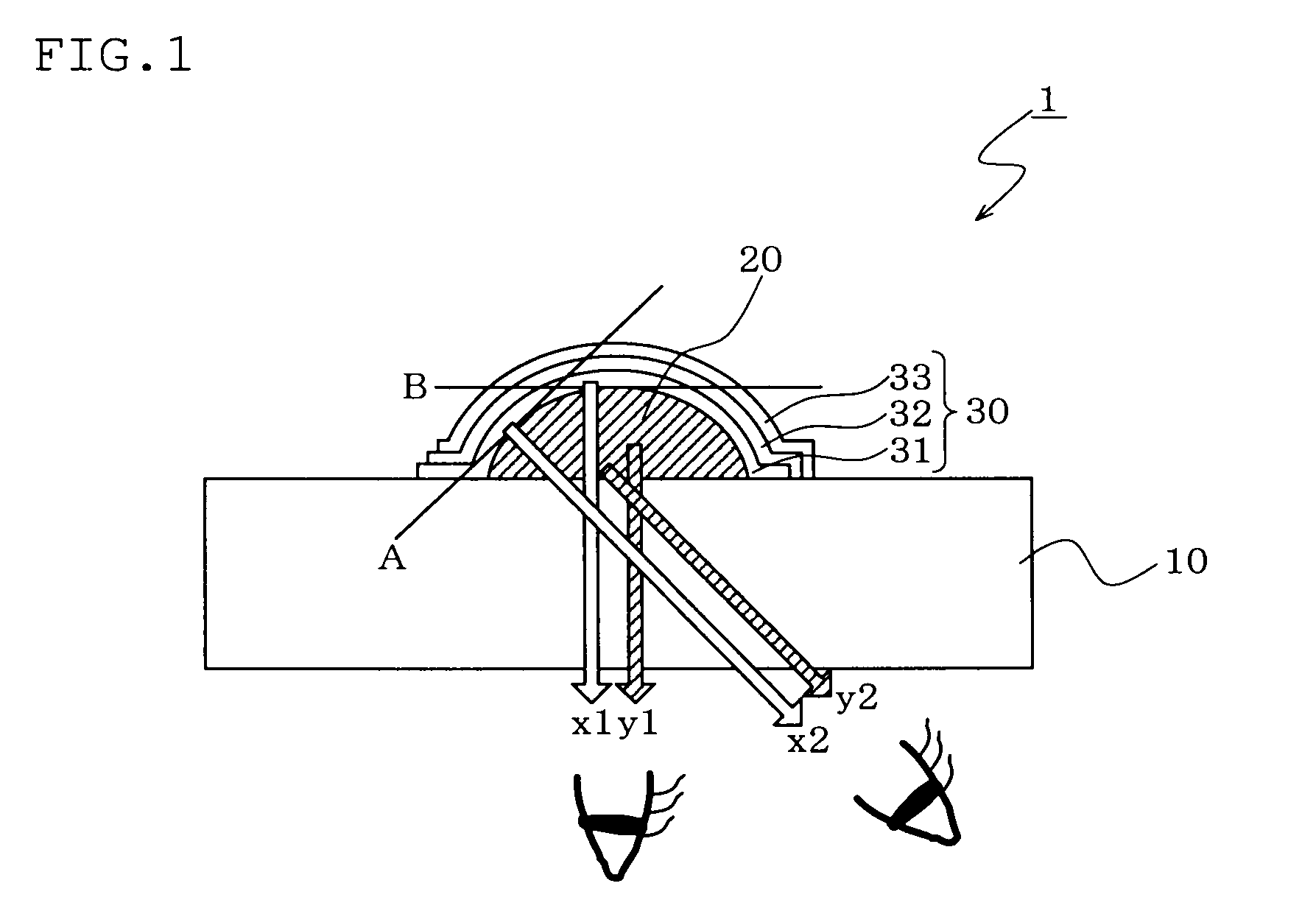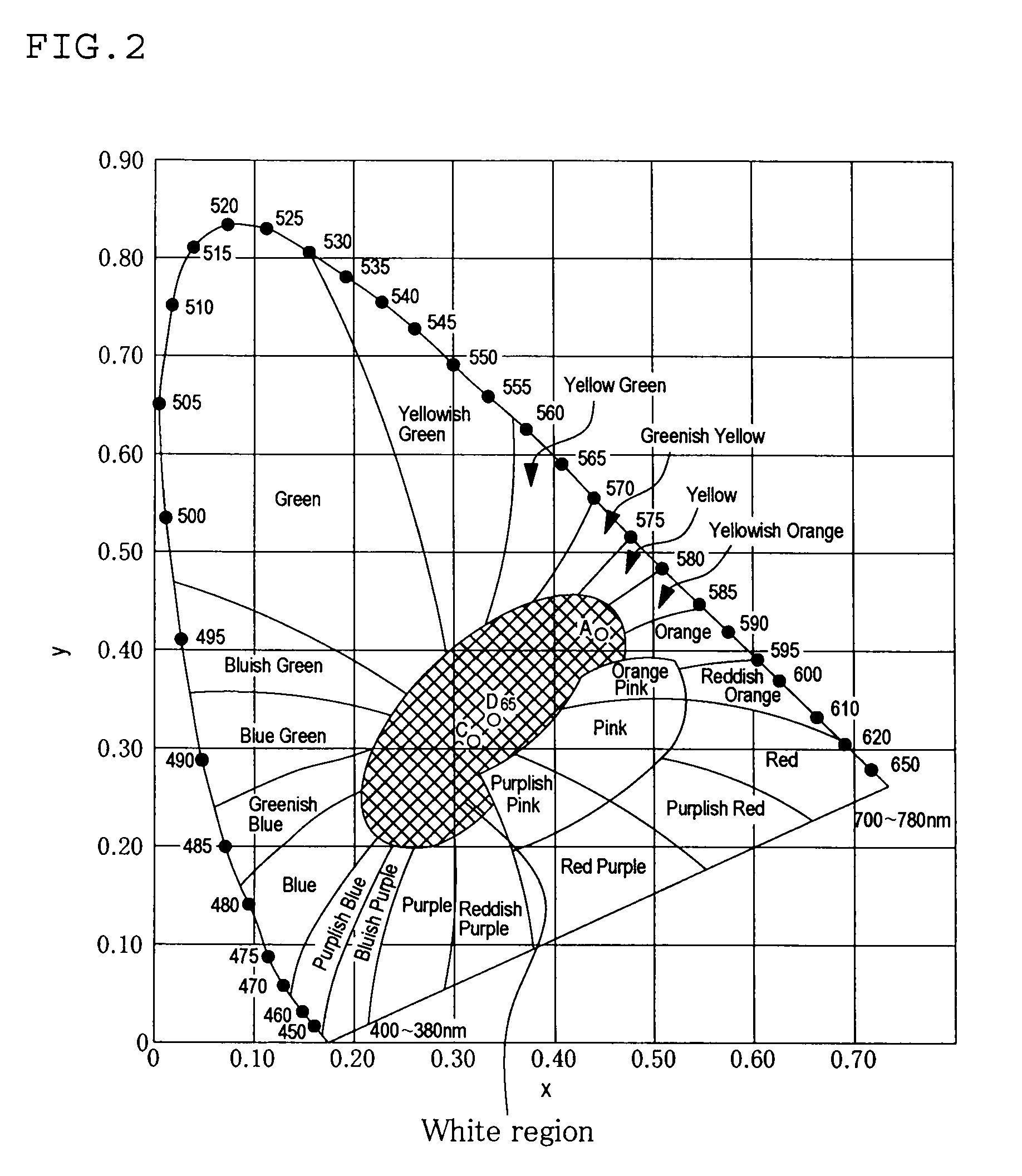Light emitting device
a technology of light emitting device and light emitting device, which is applied in the direction of discharge tube/lamp details, discharge tube luminescnet screen, organic semiconductor device, etc., can solve the problems of deterioration or white emission of organic el device, restrictions on the use of conventional, and inability to provide a light emitting device. , to achieve the effect of reducing view angle dependency, preventing the emission of emitting device, and improving luminous efficiency per unit area
- Summary
- Abstract
- Description
- Claims
- Application Information
AI Technical Summary
Benefits of technology
Problems solved by technology
Method used
Image
Examples
preparation example 1
Preparation of a Semiconductor Nanocrystal Fluorescence Medium Material 1
[0240]0.5 g of cadmium acetate dehydrate and 1.6 g of tetradecylphosphonic acid (TDPA) were added to 5 ml of trioctylphosphine (TOP). Under nitrogen atmosphere, the resulting solution was heated to 230° C., and stirred for one hour. After cooling to 60° C., 2 ml of a TOP solution containing 0.2 g of selenium was added, whereby a raw material solution was obtained.
[0241]10 g of trioctylphosphine oxide (TOPO) was put in a three neck flask, and vacuum-dried at 195° C. for one hour. The pressure was raised to atmospheric pressure with a nitrogen gas. The flask was then heated at 270° C. in the nitrogen atmosphere. While stirring the system, 1.5 ml of the above-obtained raw material solution was added. The reaction (core growth reaction) was allowed to proceed while occasionally checking the fluorescent spectrum of the reaction solution. When the nanocrystal had a fluorescence peak at 615 nm, the reaction solution w...
preparation example 2
Preparation of a Semiconductor Nanocrystal Fluorescence Medium Material 2
[0246]In order to synthesize indium phosphate (InP) semiconductor nanocrystals, 0.02 g (0.1 mmol) of fresh In(OH)3 was dissolved in 0.5 g (3 mmol) of HPA and 3.5 g of TOPO at about 200° C. under argon stream. The resulting solution was then cooled to 120 to 130° C., and argon was flown into the reaction system. After reducing the pressure for 20 to 30 minutes, argon was further flown for 10 to 15 minutes. The above-mentioned procedure of argon flow and pressure reduction was repeated three times to remove all of the water and the oxygen which had been absorbed in the reaction system. After heating the reaction mixture to 300° C., 2 g of a stock solution containing 0.0277 g (0.1 mmol) of P(TMS)3, 1.8 g of TOP and 0.2 g of toluene was poured. The reaction mixture was then cooled to 250° C. to allow the nanocrystals to grow. After the nanocrystals grew to a desired particle size, a mantle heater was quickly dismou...
preparation example 3
Preparation of a Fluorescence Medium Material 3 Using an Organic Fluorescence Material (a Perylene-Based Pigment)
[0248]As a perylene-based pigment, 0.3 wt % (concentration per solid matter) of a compound shown by the following formula (Ia), 0.6 wt % (concentration per solid matter) of a compound shown by the following formula (IIa) and 0.6 wt % (concentration per solid matter) of a compound by the following formula (IIIa) were each dissolved in the same matrix resin as in Preparation Example 1, whereby a fluorescence medium material 3 using the perylene-based pigment was prepared.
PUM
 Login to View More
Login to View More Abstract
Description
Claims
Application Information
 Login to View More
Login to View More - R&D
- Intellectual Property
- Life Sciences
- Materials
- Tech Scout
- Unparalleled Data Quality
- Higher Quality Content
- 60% Fewer Hallucinations
Browse by: Latest US Patents, China's latest patents, Technical Efficacy Thesaurus, Application Domain, Technology Topic, Popular Technical Reports.
© 2025 PatSnap. All rights reserved.Legal|Privacy policy|Modern Slavery Act Transparency Statement|Sitemap|About US| Contact US: help@patsnap.com



